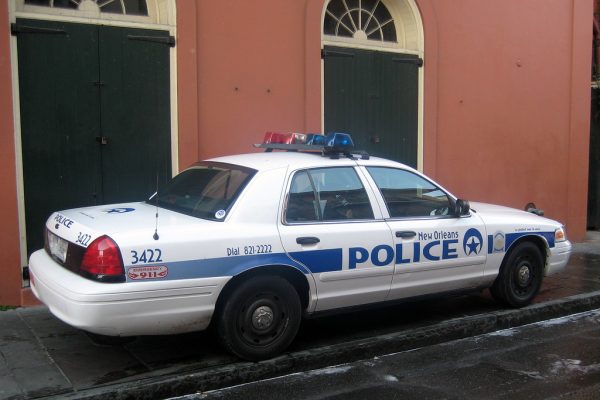
Nine separate shootings took place in New Orleans over Thanksgiving weekend, despite the city’s downward trend in crime this year.
The shootings left four people dead and 10 people injured.
“One of the primary reasons that we have these violent acts has to do with the fact that guns are so accessible, particularly to young people,” Reginald Parquet, Tulane University social work professor, said. “They’re easy to get and young people who carry guns oftentimes feel empowered. They feel that they can make you do what they want you to do by pointing the gun at you.”
Three of the shootings occurred in the French Quarter as a result of multiple fights on the street.
Parquet teaches the course Guns and Gangs at Tulane. He has served as the superintendent of Louisiana’s largest juvenile correction facility, worked at the Louisiana Office of Juvenile Justice and was the statewide director of the Mental Health Rehabilitation Program.
Despite this horrific episode, New Orleans and Louisiana are leading the country in crime decline.
The U.S. experienced a 10.3% decrease in violent crime between June 2023 and 2024. New Orleans has more than quadrupled this feat, experiencing a 43% decrease in violent crime and a 43% decrease in nonfatal shootings.
The reason for this major decrease is unknown, but many justifications have been proposed.
In March, Gov. Jeff Landry signed eight crime bills following a special legislative session, aiming to increase punitive measures and safety.
“The propensity of some to signal their virtuous compassion for criminals has become a liberal custom to many, without forethought of the consequences to society and the danger it creates in our neighborhoods and homes,” Landry said at the opening of the session.
One bill authorized $1.75 million to send state police to New Orleans “for the purposes of supplementing local law enforcement capabilities.” Another lowered the age to prosecute children as adults from 18-years-old to 17-years-old.
Landry also passed laws that allow the carrying of guns without a permit and expand methods of execution for the death penalty.
“I am not at all convinced that some of the punitive measures that the legislature has passed will actually reduce crime,” Parquet said. He fears that increasing access to guns could lead to more violent crime.
Landry has credited Troop NOLA, the state police force now stationed in New Orleans, with the plummeting violent crime rate.
Others believe the decrease in crime is a result of post-pandemic shifts. Increasing trust in law enforcement may be another factor.
Throughout his work in the criminal justice system, Parquet said he learned that Louisiana cares more about retribution than rehabilitation.
Louisiana has one of the world’s highest incarceration rates, along with a recidivism rate that teeters around 40%.
“We can’t just gather them all up, send them to trial, convict them and then lock them up,” Parquet said. “If we invested the kinds of rehabilitation funds to help people, even persons who have committed violent crime — I believe that there is still help and hope for them — but we have to take a different approach in dealing with it.”
Guns have a unique cultural position in New Orleans and Louisiana.
“This culture of embedment means that in certain communities, that’s what you are expected to do, is to carry a weapon,” Parquet said. “Sometimes these kids get on social media and brag about the fact that they have a powerful weapon that can take someone’s life. And for them, part of this culture of embedment means that they don’t care…if there are innocent bystanders that may be shot in a drive-by [shooting]. That’s part of that culture of embeddedness.”
Louisiana has the second highest rate of gun deaths in the country. In 2021, the gun ownership rate was over 50%.
Tulane has one of the most geographically diverse student bodies in the country. For students who don’t come from urban areas or pro-gun states, proximity to gun violence can be shocking.
“Transitioning from the suburbs to New Orleans has shifted my perception of safety and has made me more cautious of my surroundings,” freshman Paige Benjamin said.
Benjamin is from a small town in New Jersey, which has the fourth-lowest gun death rate in the nation.
“With a more dense population and New Orleans’ high crime rate, I came to school prepared with safety tools such as pepper spray,” she said. “I feel safer near campus as I am surrounded by my peers and feel protected by TUPD. When I enter other parts of the city, I am more vigilant.”
New Orleans has a different approach to gun violence than the rest of the state. Mayor Latoya Cantrell created “A Generational Gun Violence Reduction Plan” in 2019.
Her plan focuses on the social work, public health and community outreach approaches to reducing gun violence, rather than the punitive measures and expansion of access to guns that Landry promotes.
“We have to be prepared to not just do outreach, but we have to be prepared to do in-reach,” Parquet said.
New Orleans’ Office of Violence Prevention has the Community Crisis Intervention Team. The team of nine staff members works with victims of gun violence and their families at two local hospitals to calm tensions and prevent retaliation.
“We have to go into these at-risk communities and not be afraid to do so…and work with young people who may have the potential to engage in violent activities. They’re not going to come to us unless they’re court ordered. But there are many more young people out there who are not court ordered that need help and need assistance,” Parquet said.


